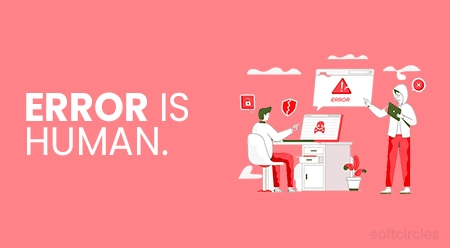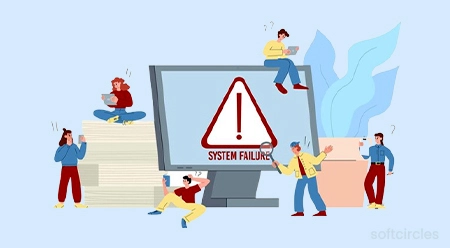What is QA (Quality Assurance)?
"Quality assurance" has a long history predating custom software development and even computers. A well-developed QA system boosts a company's credibility, increases customer confidence in products, improves workflow efficiency, and provides a significant competitive advantage. As a result, QA is frequently associated with the ISO 9000 international standard, which businesses use to ensure the effectiveness of their quality assurance system.
Quality assurance is derived from the manufacturing industry, where workers conduct quality checks to ensure that a product meets its specifications. We have all seen the small stickers that peel off the insides of new shirts or pants pockets. Those stickers inform us that the product was inspected, passed, and even who performed the inspection.
How does quality assurance work in custom software?
People in manufacturing will tell you that you need to watch what's coming off the line to ensure that the machines have produced the correct product and meet its specifications.
It's not as simple in the world of custom software development. Creating custom software that allows businesses to add new features, adjust functionality, and integrate with new systems is custom software development.
Custom software, by definition, does not always adhere to a set of standards. Instead, you test your finished product against the requirements in custom software to see if it stuck to the design.
Quality assurance for custom software is similar to checking if the finished home matches the blueprint. As a result, because they are the instructions provided to guide the development of the custom software product, software requirements are the foundation of any quality assurance process.

Error is human
Humans write code. If there is one constant about humans, we make mistakes. These errors are ingrained in the software. Quality Assurance comes in and plays a critical role in custom software development.
In the Quality Assurance process, QA analysts test software in development to identify areas where humans may have made mistakes. Sometimes the errors are the ones you would expect.
For instance, you have a custom software application that calculates customer satisfaction scores for a large company's customer care department.
Writing the code for that calculation is more than just writing instructions. While it may appear simple to do something that seems correct, the code may ultimately miscalculate customer satisfaction scores because the coder overlooked the parenthesis around a calculation.
Minor errors in coding can completely change the output of a calculation, and these errors become embedded in the software. Quality assurance is intended to detect and eliminate such errors before they are deployed to production.
The Unknown Value of QA
Many people do not realize about Quality Assurance because it is more than just looking for errors in software. QA also ensures that what we create meets the software project's requirements.
If you enter 2+2 and get 5, you can easily see that we have an error. However, what if that calculation should never have included addition in the first place? What if the formula for calculating the customer satisfaction score had used multiplication instead of division? A good QA process will ensure that the code works and meets the requirements and objectives.

Quality assurance is concerned with more than just checking for programmatic issues; it also ensures the requirements themselves have been met. In Quality Assurance, you create a series of test scenarios to help validate that the code is doing what the business user intended when requirements are completed. We use the criteria to generate testing conditions.
Quality Assurance Analysts ensure that the code for custom software meets all three of its goals:
- It functions properly • It meets the business and functional requirements
- It satisfies the performance requirements.
- However, there is another distinction between quality assurance in manufacturing and quality assurance in custom software development.
QA does not occur only at the end.
Following the manufacturing analogy, it is easy to assume that QA testing occurs at the end after the product has been developed. Quality Assurance should occur concurrently with development in software development so they can perform testing continuously. The finished product is tested again at the end to ensure that the final construction went as planned.
What is the difference between quality assurance and quality control?
These two activities are frequently misunderstood. They are, in fact, quite different. While quality assurance is concerned with preventive measures, quality control is concerned with corrective actions. Quality assurance is the responsibility of everyone involved in the process, while quality control is the domain of a separate team (of testers).
Nonetheless, all of these activities are inextricably linked. Quality control includes software testing.
What distinguishes quality assurance from software testing?
The two processes appear to be interchangeable. After all, both aim to deliver high-quality software that meets specific requirements.
However, consider this:
The goal of QA processes is to ensure that the quality of a product meets the client's needs. Quality assurance professional’s work on developing and implementing strategies that ensure the team adheres to all of the necessary procedures of the software development lifecycle. It is a proactive activity that emphasizes process development, continuous improvement, and defect prevention.
On the other hand, software testing focuses on detecting flaws and errors in software. Test software rigorously tests software to see any deviations from requirements or fixed defects before release. Furthermore, testers are only in charge of detecting bugs, not fixing them.

Why is it critical to maintain software quality?
Quality assurance is an essential component of any software development process. In essence, quality assurance in software development assists businesses in developing products and services that meet the expectations and needs of their customers. It enables the development of high-quality product offerings, which improves consumer loyalty and trust. Teams can prevent product defects by adhering to the standards and procedures defined by a QA program.
Depending on the organization's size, QA may include several subtasks. The QA process, at its core, produces a specific quality deliverable.
Because software requirements are constantly changing and teams add new objectives, the QA team must ensure that the newly added goals or needs do not harm software quality.
How does QA determine the quality of software?
The quality attributes approach and defect management approach are used in quality assurance. A defect in QA is any element of the software that is not following the client's requirements. Developers may fail to comprehend such a requirement, resulting in design errors entirely. Poor data handling, buggy code, and incorrect functional logic are other sources of errors.
The defect management approach helps track defects and categorize them based on their severity. QA professionals can create control charts to assess the development team's capabilities.
On the other hand, the quality attributes approach focuses on achieving the six quality characteristics
listed below:
- Functionality – Are the software's functions appropriate, and have they been implemented correctly? How does the software interact with the rest of the system? Can it securely handle data? Is it following the applicable laws and regulations?
- Reliability – How well does the software perform under extreme conditions (for example, component failure)? How frequently does it fail? How quickly can the system resume regular operation after a loss?
- Usability – Can users understand the software functions easily? How much time and effort is required to comprehend software functions.
- Productivity – Did the development team use good coding practices when creating software? Is the architecture intended to be efficient?
- Maintainability – How simple is finding and fixing a software bug? Is it possible to pinpoint the root cause of a fault? How stable is system performance while changes are implemented?
- Portability – Is the system capable of adapting to changes in its environment? How easily can it be installed? How simple is it to replace a system component in a specific domain?
QA in software development – common errors made by teams
The most common issues affecting the effectiveness and performance of Quality Assurance:
- They fail to analyze the defect's occurrence, which increases the likelihood of it recurring.
- They are afraid to ask questions – one of the most common roadblocks in testers' and QA professionals' daily work is fear of what others will think. However, if failing to ask a question causes the team to miss a scenario, the consequences are worse.
- Automation can be tricky – automation is currently a buzzword in QA circles. To address the issue of introducing automation, teams frequently begin with semi-automated solutions, such as a bug logging tool. Automation tools used by groups that are ready for it include QMetry Automation Studio, Selenium, AppManager, and Watir.
- Ignoring user experience – QA must look beyond the testing sheets to consider user experience, particularly whether it meets the client's requirements. If the team has any UX suggestions, they should communicate them to the client. Clients may have a vision that is difficult to realize from a UX standpoint. That is when the QA team should step in and make suggestions. In the end, it is the client's decision.
- Blaming others for bugs: QA teams often find it challenging to collaborate with development teams, especially when discovering a bug in a live application. Their job, however, is to establish processes that will assist everyone involved in the development of software in producing better products? Nobody should be blamed for the bug; instead, figuring out how to avoid making the same mistake again is a much better use of your time. Maintain objectivity while coordinating work with other teams. Avoid playing the blame game.
- " – just because the software has been released, ''There's nothing we can do for a live app," does not mean the QA process is finished. In reality, once customers begin using the app, QA professionals should keep a close eye on the support team's activities. Maintain vigilance and analyze each request, then consider scenarios related to it and use tools that provide live bug reports.

Conclusion
Quality control is an essential component of the software development process. The primary goal of QA in software development is to deliver a product that meets all client requirements, whether functional or user experience-related. It is impossible to ship a flawless digital product if you do not have an experienced QA team.
QA analysts in custom software are not only looking at a finished custom software product. Throughout the process, they observe the custom software product come together. Because custom software can be extensive and have a lot of code, we want to catch problems early, so we aren't looking for a needle in the haystack at the end.








